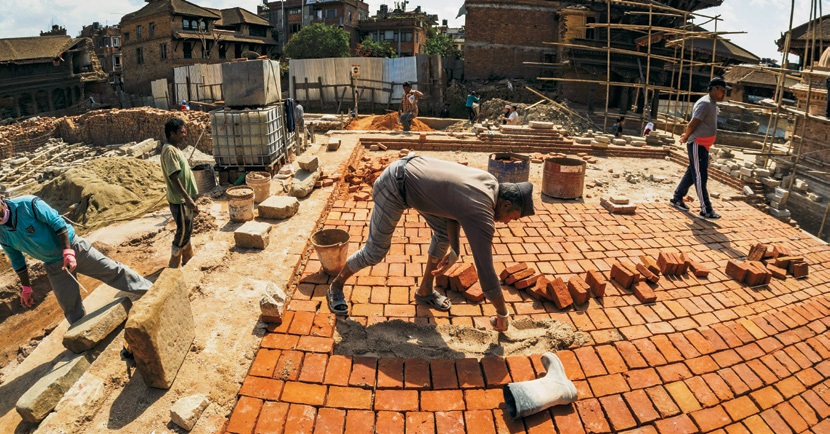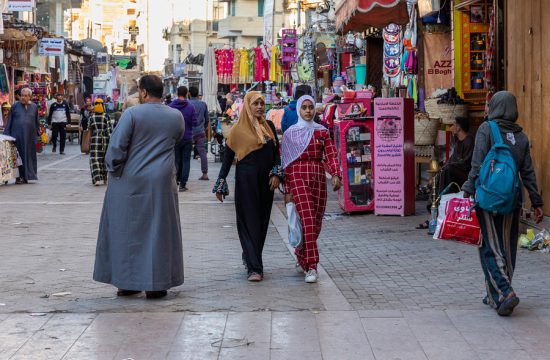Lessons learned at Singapore Management University are guiding efforts to rebuild mountain villages in Nepal following the devastating earthquakes of 2015.
 James Tan is a man who often finds himself in the right place at the right time. He joined SMU’s Master of Tri-Sector Collaboration (MTSC) just as he accepted an invitation to help the Anglican Deanery of Nepal (ADoN) design a reconstruction master plan for villagers in the central Dhading region affected by the 2015 earthquakes. By applying what he learned at SMU, Tan played a central role in launching Project Fresh Hope, a three-year multi-sector partnership aiming to rebuild 50 mountain village communities and help them create a sustainable and disaster-prepared future.
James Tan is a man who often finds himself in the right place at the right time. He joined SMU’s Master of Tri-Sector Collaboration (MTSC) just as he accepted an invitation to help the Anglican Deanery of Nepal (ADoN) design a reconstruction master plan for villagers in the central Dhading region affected by the 2015 earthquakes. By applying what he learned at SMU, Tan played a central role in launching Project Fresh Hope, a three-year multi-sector partnership aiming to rebuild 50 mountain village communities and help them create a sustainable and disaster-prepared future.
Tan’s life has been naturally building up to involvement in humanitarian assistance. While serving as an Army officer in the Singapore Armed Forces, he was deployed to Afghanistan for reconstruction and engagement operations. There, he discovered a passion for humanitarian action. He subsequently pursued a postgraduate diploma in humanitarian assistance in the U.S., followed by volunteer work with various humanitarian organisations, and establishing a consultancy for strategic partnership and capacity building in Asia’s developing countries.
Tan was involved in rescue and recovery assistance in Nepal following the major earthquakes of April and May 2015 when ADoN approached him. This Singaporean-Nepalese NGO with 25 years of experience in the region had established strong relationships with 50 mountain village communities. Post-earthquake, it partnered with four other organisations to deliver muchneeded relief resources to them. However, as the winter months approached, it became increasingly clear that a transition was needed – from emergency relief to a much longer-term reconstruction initiative.
Formulating a plan
Tan helped to develop Project Fresh Hope’s master plan in three main stages: he defined the project’s short-term and long-term goals, conducted a detailed stakeholders’ analysis, and planned for the project’s major implementation challenges.
In defining the project’s goals, Tan was inspired by another project called Grow Asia, a partnership between the World Economic Forum and the secretariat of the Association of Southeast Asian Nations to enable sustainable and inclusive agricultural development in the region focusing on smallholder farmers. He worked backwards from Project Fresh Hope’s goals of a region that will be ‘rebuilt better’ in three years, and where development will be ‘future-proofed and sustainable’. By doing so, he defined the project’s necessary inputs in order to reach critical six-month outputs, followed by 12-month and 24-month outcomes. To achieve a more sustainable future, Tan surmised that the mountain community villages needed leadership, manpower, funding, technology, materials, expertise and training. These inputs would help develop their disaster-preparedness, establish strong networks, conserve their water and bamboo forest resources, develop sustainable sources of livelihood, build
infrastructure and acquire digital literacy.
Leading from the middle
By defining clear goals, Tan was able to identify the kinds of partners that could help achieve them. ADoN was ‘leading change from the middle’, a concept developed by Professor Jackson Nickerson from Washington University in St. Louis, which is depicted by a central change-maker surrounded by four types of partners.
Tan categorised sponsors as superordinates, a group that has significant power in the partnership. Construction firms, ICT and utility providers were categorised as subordinates, whose services are needed and who must be engaged in a way that makes them feel empowered. The project’s customers are the villagers, who need to be convinced that the project will add more value to them than it will cost them. Finally, he placed other partners, such as a local mountain trekking enterprise, the media, district and national government, other NGOs and mountain village communities, in the category of complementors or potential blockers; gatekeepers to vital resources whom the project needs to come on board.
This meant that ADoN was moving from interacting with four partners to engaging a total of some 11 partners in Project Fresh Hope. “The introduction of new and diverse public-private stakeholders into the project’s framework understandably created some initial reservations and differences among the local Nepalese leadership teams, as well as the other stakeholders,” says Tan. “However, ADoN mostly succeeded in match-making these stakeholders and forging a united coalition of partners.”
Throughout the project Tan and ADoN’s core team assessed the partners’ interests and influences, and their relative importance and commitments to the project. They also worked on deepening partners’ commitments and cooperation, and regularly evaluating the project’s effectiveness.
Potential role model
“By applying a variety of relationship management techniques, monitoring and evaluation metrics, coupled with dynamic adjustments, the project partnership has remained strong and the implementation has, by and large, proceeded according to plan,” says Tan.
Project Fresh Hope aims to implement some of the United Nations’ Sustainable Development Goals and to inspire similar partnerships in Nepal and other parts of the world.
“Ten years on, perhaps Project Fresh Hope might be popularly remembered as a game-changing partnership that not only helped a marginalised region ‘rebuild better’ and ‘future-proof’ its development, but also inspired other regional projects and partnerships to embrace strategic aspirations and higher-order contributions,” writes Tan in his MTSC capstone paper on the project.
On a personal level, Tan says the MTSC programme has sharpened his consciousness and intentionality in employing cross-sector collaboration skills for project success. “The frequent conduct of stakeholders’ analyses, the investment in trust-building techniques, and the deliberate co-formulation of partnership scenarios are some of the many strong examples of how the MTSC programme has added value to Project Fresh Hope’s design and implementation processes,” he says.







